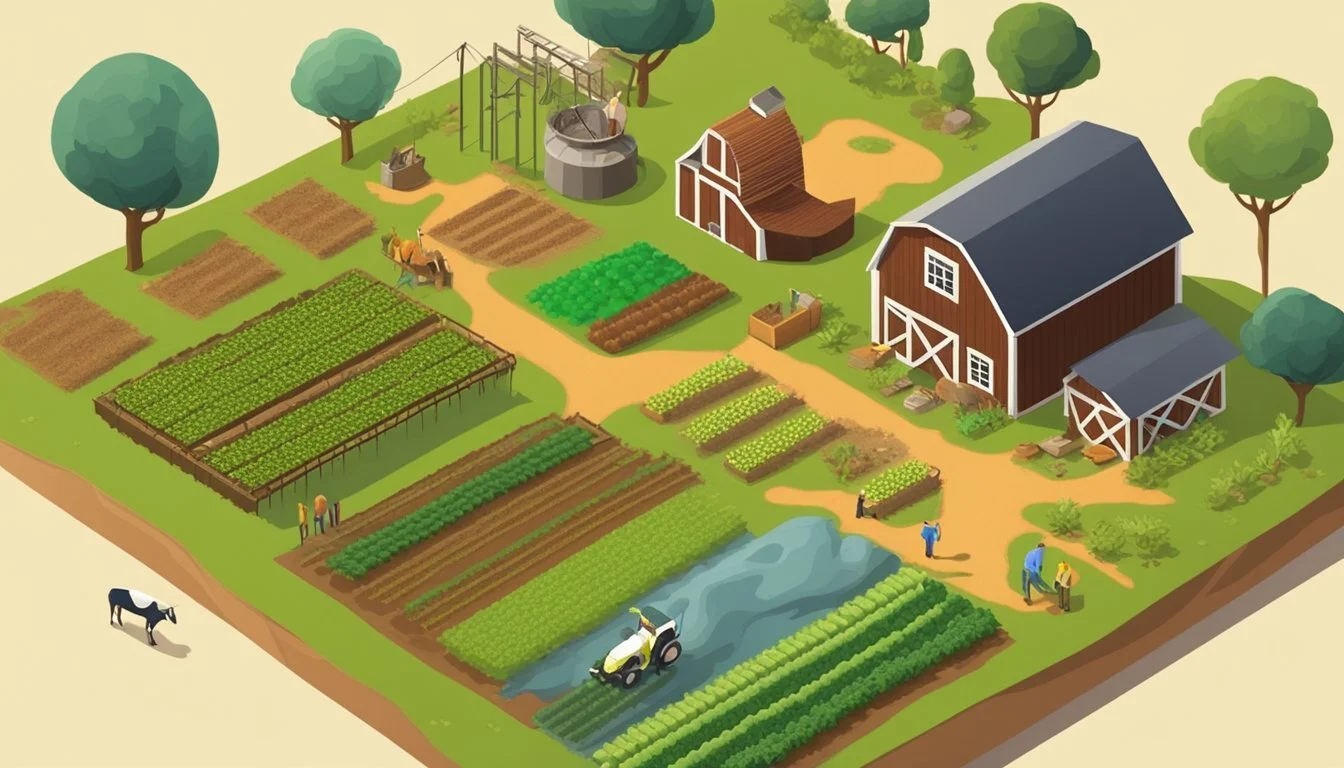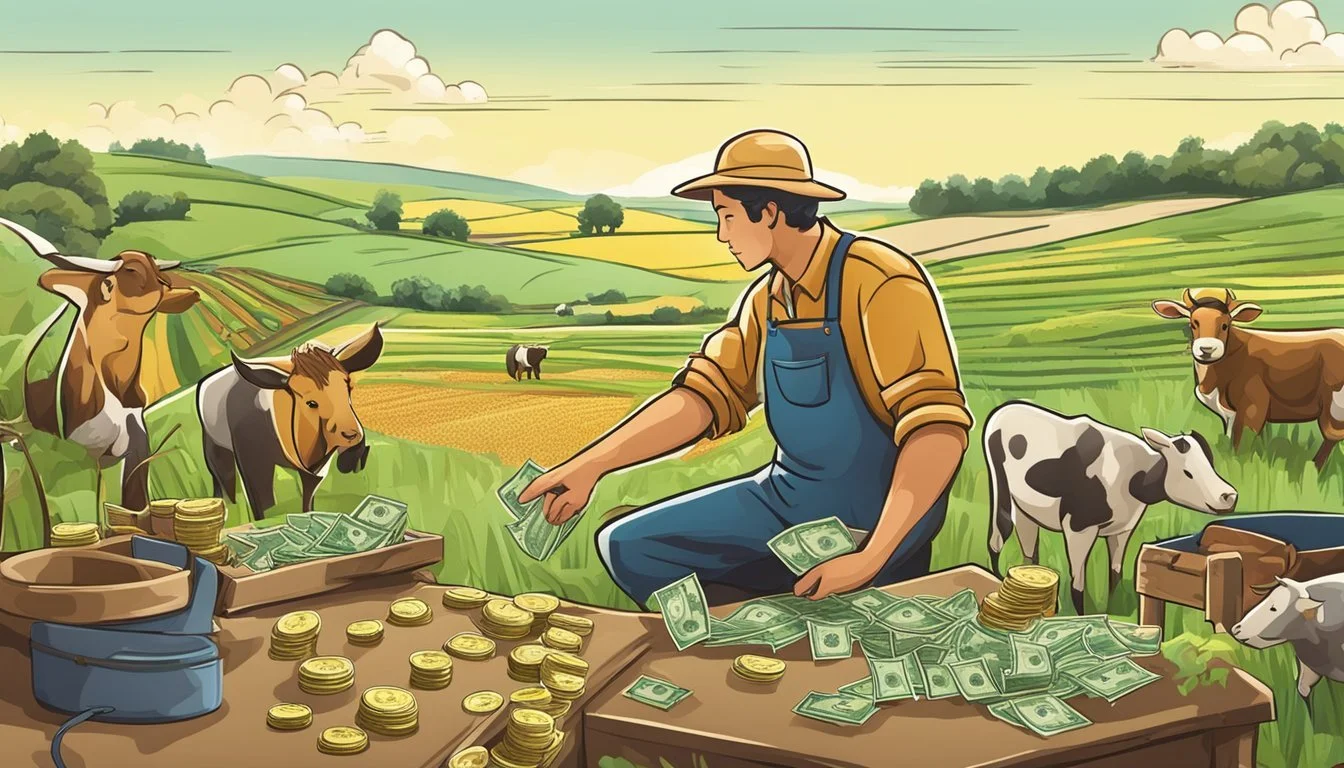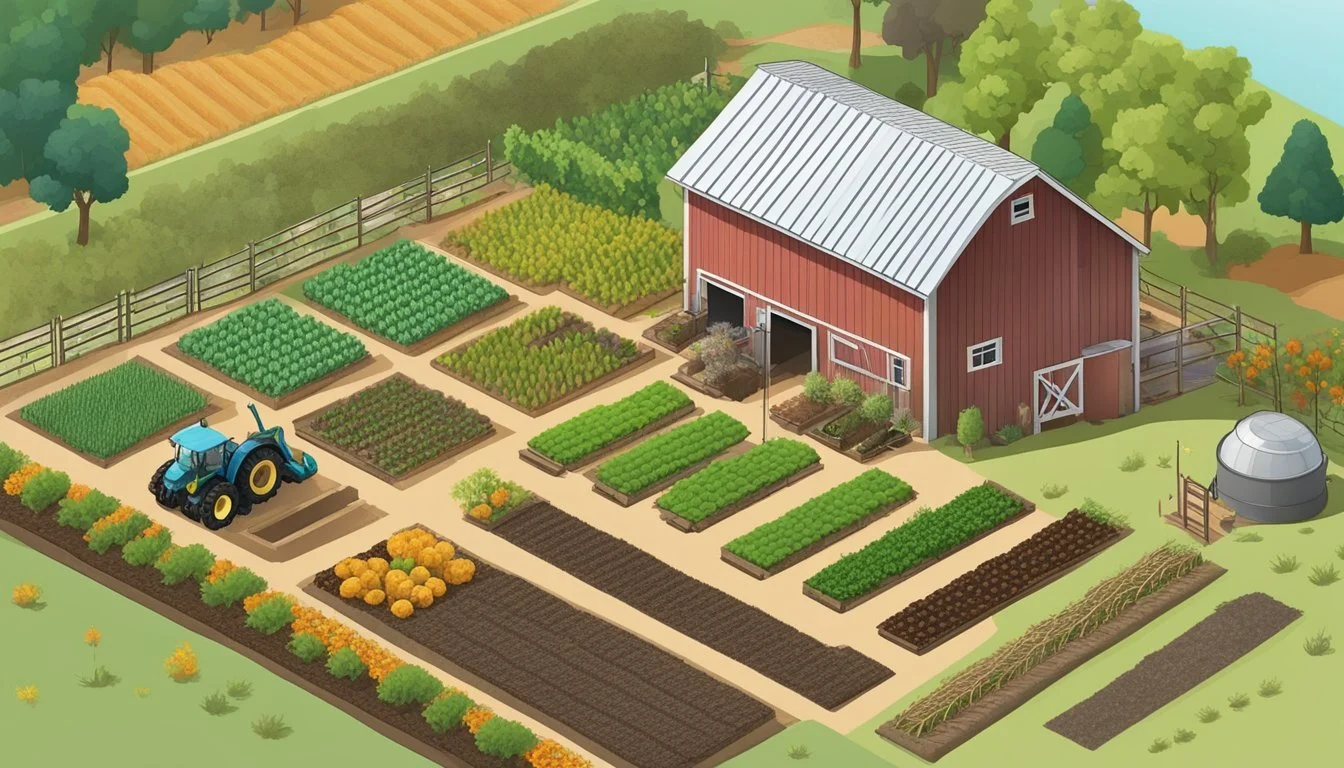Cost of Starting a Small Farm
Essential Financial Insights for New Farmers
Embarking on the journey of starting a small farm requires a careful assessment of initial investments and ongoing expenses. The startup costs for a small farm are influenced by various factors including the cost of land, which can differ significantly depending on location. For entrepreneurs, acquiring a piece of land represents the most substantial portion of the initial costs. Beyond purchasing land, one must consider investments in irrigation systems, specialized farming equipment, and the buildings necessary for storing crops or housing livestock. Aspiring farmers must also account for smaller, but essential expenses such as seeds or chicken feed when planning their farm operation.
In addition to the upfront costs, running a farm involves ongoing expenses like crop insurance, liability insurance, and maintenance of equipment and facilities. Those considering urban farming may face different financial challenges compared to their rural counterparts, such as the need for more expensive equipment due to space constraints per square foot. Regardless of the type of operation – whether it's a farm focusing on fresh produce for local food hubs or a larger operation catering to a widespread market – budgeting for both living expenses and ongoing farm costs is crucial. Prospective farmers should also plan for capital investment needs, market research for the crops or livestock they wish to produce, advertising expenses to reach customers, and any additional costs that may arise in the pursuit to turn their farming business idea into a reality.
Evaluating Your Farming Goals
Before venturing into farming, it is crucial for prospective farmers to thoroughly evaluate their goals as this will dictate the nature of their initial and ongoing investments.
Type of Farm
The type of farm one wishes to operate significantly influences startup costs. For instance, a vegetable operation might require different inputs like specialized equipment for tillage and harvesting compared to a dairy farm that needs substantial capital investment in livestock and milking apparatus. Cost of land also varies greatly depending on the farm type; land suitable for grazing might come at a different price than arable land for crops.
Location and Acreage
Location and acreage are integral to planning. The cost of land per acre of land varies by region, and prospective farmers need to consider whether they require a smaller plot of land in an urban setting, which can be expensive per square foot, or a larger piece of land in a rural area, which might offer more affordable options. Access to capital is crucial, as a substantial initial investment is often required for the purchase of land and irrigation systems.
Full-Time or Part-Time
Determining whether to farm as a full-time or part-time venture affects the scale and thus the startup costs and potential ongoing costs. Part-time farmers might start with a smaller plot of land while maintaining a full-time job, reducing the immediate need for a business loan. Full-time farmers may seek larger acres of land and incur more expenses from heating systems, crop insurance, and liability insurance to protect their larger operations and capital investment.
Estimating Your Startup Costs
Successful farm startup planning hinges on accurate cost estimation, ensuring financial preparedness for various initial and ongoing expenses.
Land Acquisition
Acquiring land is often the biggest expense for starting a farm. Land costs can vary dramatically based on location, quality, and size. An acre of land can range from a few thousand dollars in rural areas to much higher in sought-after locations. Urban farmers may look at the cost per square foot for smaller plots or consider leasing as a more affordable option.
Average cost: Highly variable
Additional costs: Legal fees, surveys
Infrastructure and Facilities
Initial investments include essential structures such as barns, chicken coops, and irrigation systems. Depending on the farm types, specialized heating systems or storage facilities may also be required. Larger farms have higher costs due to more complex infrastructure needs.
Basic facilities: From $10,000
Specialized infrastructure: Size and farm operation dependent
Equipment and Supplies
Farming equipment can include tractors, planters, and plows. The level of specialized equipment needed will affect your capital investment. Supplies like seed, fertilizer, and chicken feed represent ongoing costs to consider.
Small scale: Starting around $5,000
Larger operations: $100,000 or more
Operating Expenses
Operating expenses include operating costs like liability insurance, crop insurance, utilities, and labor. If you plan to direct-sell, budget for marketing and advertising expenses. Also, living expenses should be accounted for if the farm is a full-time job.
Insurance: $500 - $2,000/year per policy
Utilities: Variable based on size and type of crops
Funding Your Farming Operation
Starting a small farming operation requires careful financial planning, as initial and ongoing costs can be significant. Obtaining the necessary funds is vital for land acquisition, specialized equipment, and operational costs such as irrigation systems and livestock feed.
Loans and Financing Options
Financing options are essential for new farmers facing considerable startup costs. Business loans specifically tailored to the agriculture sector can provide the capital investment needed for purchasing land, which is often the biggest expense. A loan might cover:
Land costs: Varying per acre based on location and fertility.
Farming equipment: From tractors to irrigation systems.
For those looking at larger farm operations, greater initial investment will be necessary, especially when specialized equipment is required. Additional costs may include crop and liability insurance, which are crucial for risk management.
Grants and Programs
Grants offer funding without the obligation of repayment, making them a highly sought-after financing option. The US Department of Agriculture (USDA) provides various grants that cater to both conventional and urban farmers. These grants can help alleviate some of the financial burdens, especially for:
Initial costs: Including seeds, livestock, and chicken coops.
Ongoing expenses: Such as chicken feed and maintenance.
Farmers can tap into programs that support specific farm types, promote sustainable farming methods, or cater to fresh produce markets. Accessing expert advice through these programs can also guide farmers toward successful business models.
Personal Savings and Income
For many starting in the farming community, personal savings are a primary source of capital. Farming aspirants often balance a full-time job while gradually building their farming operations. This strategy can mitigate the initial financial strain, allowing them to:
Accumulate savings for a down payment on a plot of land.
Invest in essential infrastructure incrementally, such as heating systems.
Using personal income and savings for funding also provides the advantage of avoiding debt. However, it requires a significant time investment before the farm operation becomes financially sustainable.
Reducing Your Initial Expenses
When starting a farm, it's important to consider ways to minimize your initial financial outlay. Careful planning can reduce startup costs, and in some cases, ongoing expenses as well.
Buying Used Equipment
Purchasing used equipment can significantly cut the initial investment required to get your farm up and running. For items like tractors, plows, and irrigation systems, opting for pre-owned machinery can offer the same functionality at a fraction of the cost. Farmers' markets, online auctions, and local farming communities are all potential sources of affordable, second-hand farming equipment.
Cost Breakdown Example:
New Tractor: $10,000 - $30,000
Used Tractor: $5,000 - $15,000
Starting Small and Scaling Up
The cost of land is often the biggest expense for new farm operations. By starting with a moderately-sized plot or focusing on high-yield crops per square foot, new farmers can make initial purchases more manageable. Urban farmers might start with a single acre or even smaller plots if the business model is reliant on intensive, small-scale farming techniques. Efficient use of space and starting part-time while maintaining a full-time job can also keep initial costs low.
Advantages of Small-Scale Farming:
Lower capital investment
Easier management
Reduced risk
Shared Land Arrangements
Shared land arrangements can be a cost-effective option for those with limited access to capital. New farmers can lease a piece of land or engage in land-sharing agreements with other producers. This allows for a reduction in both the initial and ongoing costs of running a farm, such as liability insurance or heating systems. Moreover, this setup can foster community relationships and offer mutual support among farmers.
Types of Shared Land Arrangements:
Leasing: Temporary, exclusive land use for annual rent
Cooperative Farming: Multiple farmers working together, sharing costs and profits
Incubator Programs: Offered by some non-profits or governments to support beginner farmers
By employing tactics such as buying used equipment, starting on a smaller scale, and considering shared land arrangements, prospective farmers can reduce their initial financial burden, and pave the way for a more sustainable entry into the world of agriculture.
Developing a Business Plan
Creating a well-structured business plan is fundamental for a small farm, detailing the financial logistics, marketing strategies, and the legal framework needed to establish and run a farming operation effectively.
Financial Projections
The financial section should include a cost breakdown of startup expenses such as the purchase of land, which is often the biggest expense, and initial investments like irrigation systems and specialized equipment. An acre of land may vary greatly in price depending on location and quality. For smaller farms, costs might range from a few to several thousands per acre, while larger farms with more advanced farming methods can require millions. Financial projections must also account for ongoing costs like seed, feed, fertilizer, and staff wages. It's crucial to factor in living expenses until the farm becomes profitable.
Initial Investment
Land: $___ - $___ per acre
Equipment: $___ - $___
Buildings: $___ - $___
Ongoing Costs
Seeds/Feed: $___ per month
Utilities: $___ per month
Insurance: $___ per year
Production and Marketing
This subsection must outline types of crops or livestock, crop insurance, and liability insurance relevant to the farm's business model. If specializing in fresh produce, consider direct sales to customers through food hubs or farmers markets, which may influence the model and features of production. For urban farmers, a square foot of a vertical farming operation could be an affordable option. Additionally, marketing strategies should involve advertising expenses to target the appropriate audience and create demand for the farm's products.
Production Plans
Crop Type: ___ (e.g., vegetables, fruits, grains)
Livestock: ___ (e.g., poultry, dairy cows)
Marketing Strategies
Direct Sales: Farmers markets, CSAs
Wholesale: Food hubs, local restaurants
Legal Structures and Licensing
Choosing the correct legal structure, such as a sole proprietorship, partnership, LLC, or corporation, impacts taxes, liability, and access to capital. Licensing requirements also vary depending on the type of farm operations. For instance, selling meat may involve different permits than selling vegetables. Furthermore, conventional farms may need different certifications compared to organic producers. It’s recommended to seek expert advice from an attorney to ensure proper compliance with local and federal regulations.
Legal Structures
Sole Proprietorship
Partnership
LLC (Limited Liability Company)
Corporation
Required Licensing
Business License
Health Department Permits
USDA Certifications
Building Your Skills and Knowledge
Starting a small farm requires a blend of practical skills and in-depth knowledge. Beyond initial investments in land and equipment, aspirant farmers must invest in their education and training to ensure a successful farm operation.
Hands-On Experience and Internships
Gaining hands-on experience is invaluable. Internships offer exposure to farming methods, crop and livestock care, and the use of specialized equipment. They can also illuminate hidden costs like irrigation systems or chicken coops, providing a more complete understanding of initial and ongoing expenses.
Mentorships and Apprenticeships
Mentorships and apprenticeships under experienced farmers provide insight into farming as a full-time job. Learning from someone who manages acres of land demonstrates how to balance farm products, advertising expenses, and living expenses. Aspiring farmers understand the business model which includes the cost of land per acre, forecasting the average cost for starting, and managing additional costs.
Workshops and Training Programs
Workshops and specialized training programs educate on farm types, from conventional to organic and urban farming modalities. Topics covered may include crop insurance, liability insurance, farming community ethics, and innovative farming techniques. These programs help future farmers learn to maximize the use of every square foot of their land, which is vital when access to capital is limited.
Creating a Supportive Community
Starting a small farm involves substantial costs, including initial land investment, equipment, and ongoing operational expenses. To optimize your investment and navigate the complexities of agribusiness, establishing a community network can be immensely beneficial in sharing resources and knowledge.
Cooperative Extension Offices
Cooperative Extension Offices are critical resources for new farmers. Managed by universities, these offices provide assistance with startup costs and advice on types of crops best suited for local conditions. They can help estimate the average cost of land per acre and guide you in acquiring the right irrigation systems and specialized equipment for your farm's scale. Utilizing their services can significantly reduce initial and ongoing costs.
Farmer Networks and Associations
Farmer Networks and Associations connect you with experienced producers who can offer insights into farm operation and management. Joining these networks can help in understanding the biggest expenses for farming equipment and operations. They often provide access to group-rate crop and liability insurance, reducing capital investment. Associations may also inform about food hubs as an affordable option to reach customers and sell fresh produce.
Online Forums and Groups
Online Forums and Groups are a boon for urban farmers and those with smaller plots of land. Such online resources can provide cost breakdowns for chicken coops and feed, as well as the type of crops to yield the best return per square foot. Discussions on forums can uncover alternative farming methods and business models that lower initial investment for urban farms, such as vertical farming and community-supported agriculture (CSA) models.






